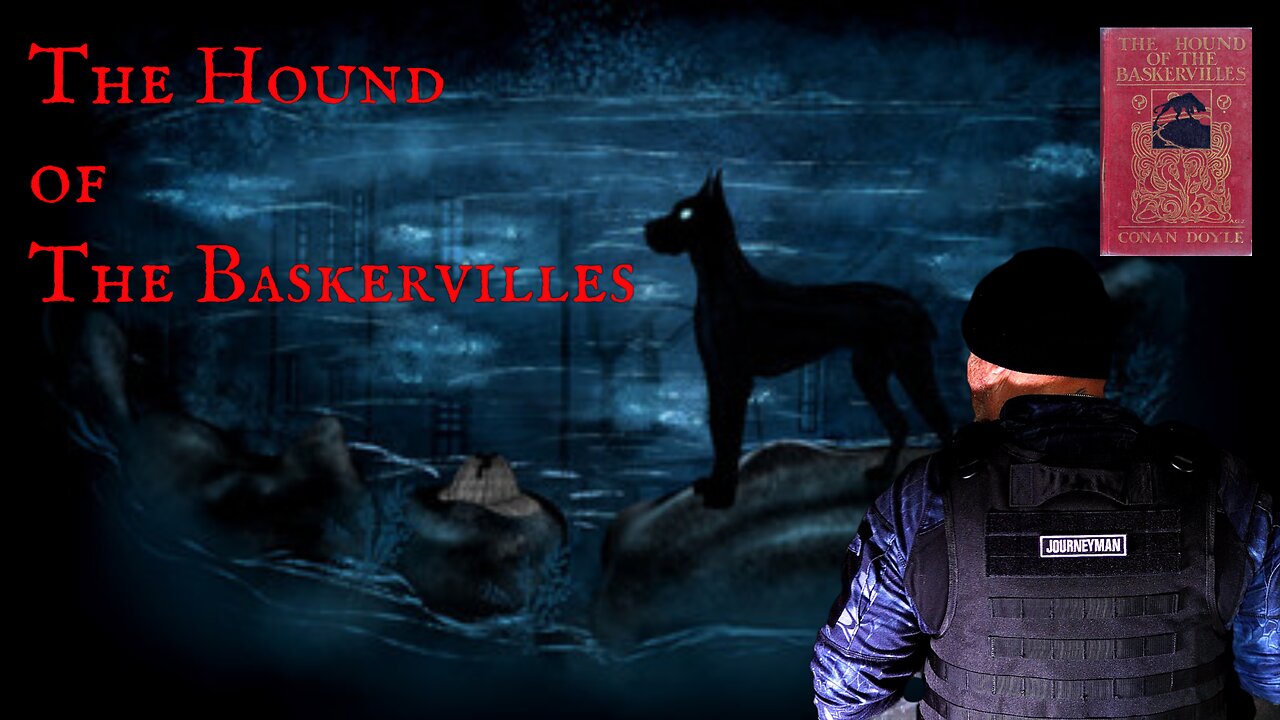Premium Only Content

The Hound of The Baskervilles
Mystery of abandoned burnt-out church where Satanic rituals took place
One of Devon's most historic churches was razed to the ground - but were Satanists behind the arson attack?
"Mr Holmes, they were the footprints of a gigantic hound!”
The church graveyard was was the burial place of sinister squire Richard Capel – or Cabell – whose monstrous behaviour inspired Sir Arthur Conan Doyle, creator of Sherlock Holmes, to write The Hound of the Baskervilles.
Cabell was alleged to have got away with the murder of his wife in the 1600s after making a pact with the devil for his soul. The people of Buckfastleigh feared him and his pack of vicious hunting dogs when he was alive. His death, on July 5, 1677, did not halt their fear and legend had it that on the night of his internment a “phantom pack of hounds” came baying across the moor to howl at his tomb.
From that moment hence, legend had it that each year on the anniversary of his death he could be found leading this phantom pack across the moor and if they weren’t out hunting, the pack could be found ranging around his grave, howling and shrieking.
Conan Doyle, who had worked as a doctor in Durnford Street, Plymouth, incorporated the legend into his famous book, which told of a diabolical hound of supernatural origin who killed Sir Hugo Baskerville after he abducted and murdered a woman in the mires of Dartmoor. The family was then cursed for evermore.
The tomb of Cabell remains and his coffin was secured beneath a heavy stone, over which a solid alter tomb was placed and then enclosed behind sturdy iron bars – ostensibly to prevent the escape of his mortal – and incorporeal – form.
-
 18:38
18:38
VSiNLive
1 day agoProfessional Gambler Steve Fezzik LOVES this UNDERVALUED Point Spread!
65.5K10 -
 LIVE
LIVE
Right Side Broadcasting Network
10 days agoLIVE REPLAY: President Donald J. Trump Keynotes TPUSA’s AmFest 2024 Conference - 12/22/24
10,172 watching -
 4:31
4:31
CoachTY
17 hours ago $13.69 earnedCOINBASE AND DESCI !!!!
58.5K8 -
 10:02
10:02
MichaelBisping
17 hours agoBISPING: "Was FURY ROBBED?!" | Oleksandr Usyk vs Tyson Fury 2 INSTANT REACTION
18.7K8 -
 8:08
8:08
Guns & Gadgets 2nd Amendment News
2 days ago16 States Join Forces To Sue Firearm Manufacturers Out of Business - 1st Target = GLOCK
66.6K63 -
 10:17
10:17
Dermatologist Dr. Dustin Portela
2 days ago $14.76 earnedOlay Cleansing Melts: Dermatologist's Honest Review
103K6 -
 1:02:20
1:02:20
Trumpet Daily
2 days ago $34.12 earnedObama’s Fake World Comes Crashing Down - Trumpet Daily | Dec. 20, 2024
65.9K46 -
 6:29
6:29
BIG NEM
1 day agoCultivating God Mode: Ancient Taoist NoFap Practices
49.9K9 -
 30:53
30:53
Uncommon Sense In Current Times
2 days ago $9.69 earned"Pardon or Peril? How Biden’s Clemency Actions Could Backfire"
66.9K5 -
 40:01
40:01
CarlCrusher
23 hours agoSkinwalker Encounters in the Haunted Canyons of Magic Mesa - ep 4
63K4